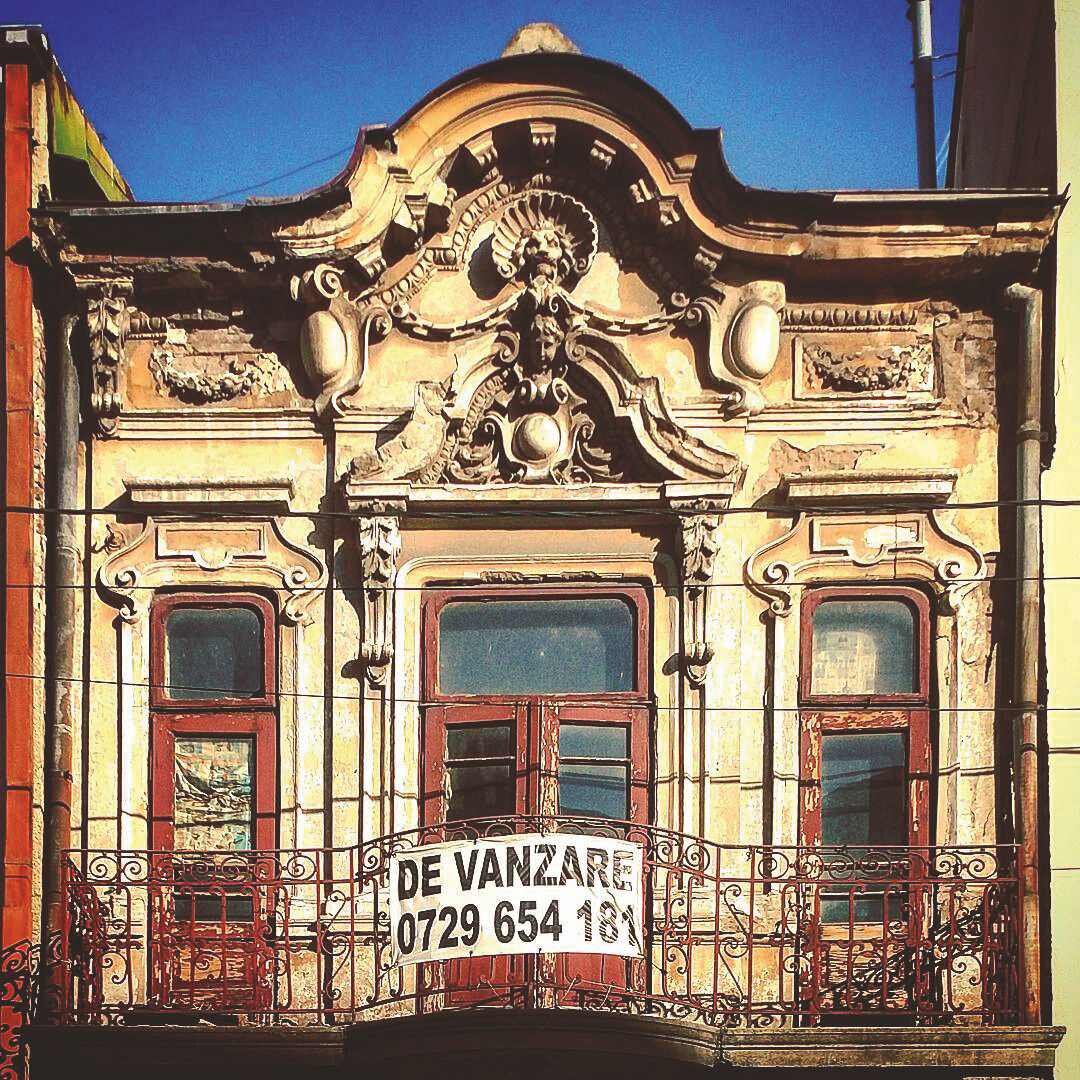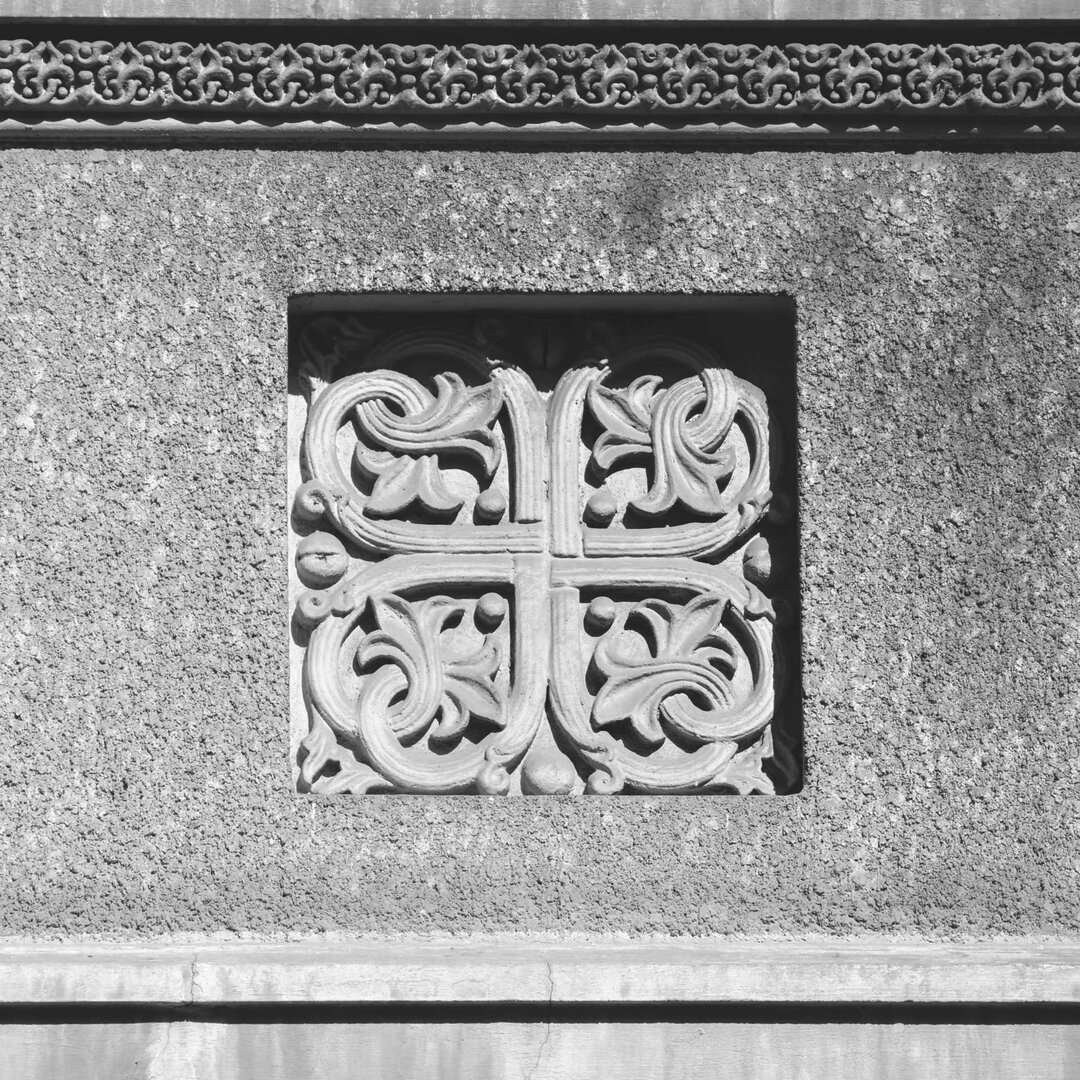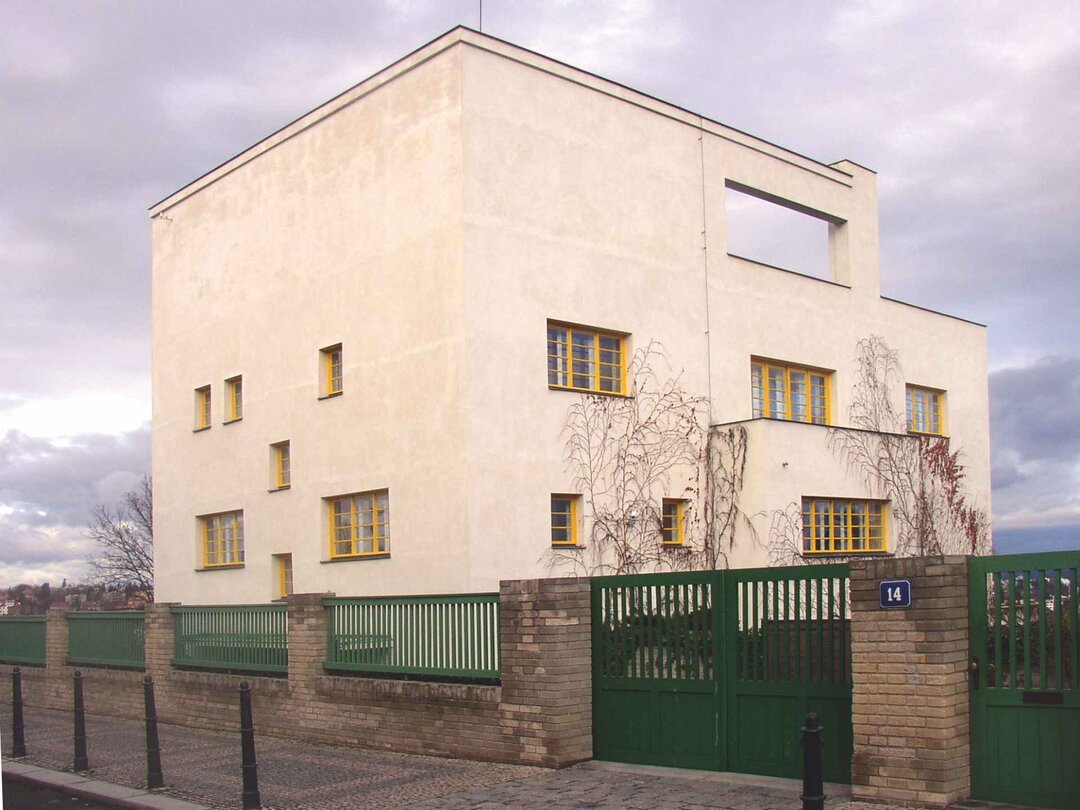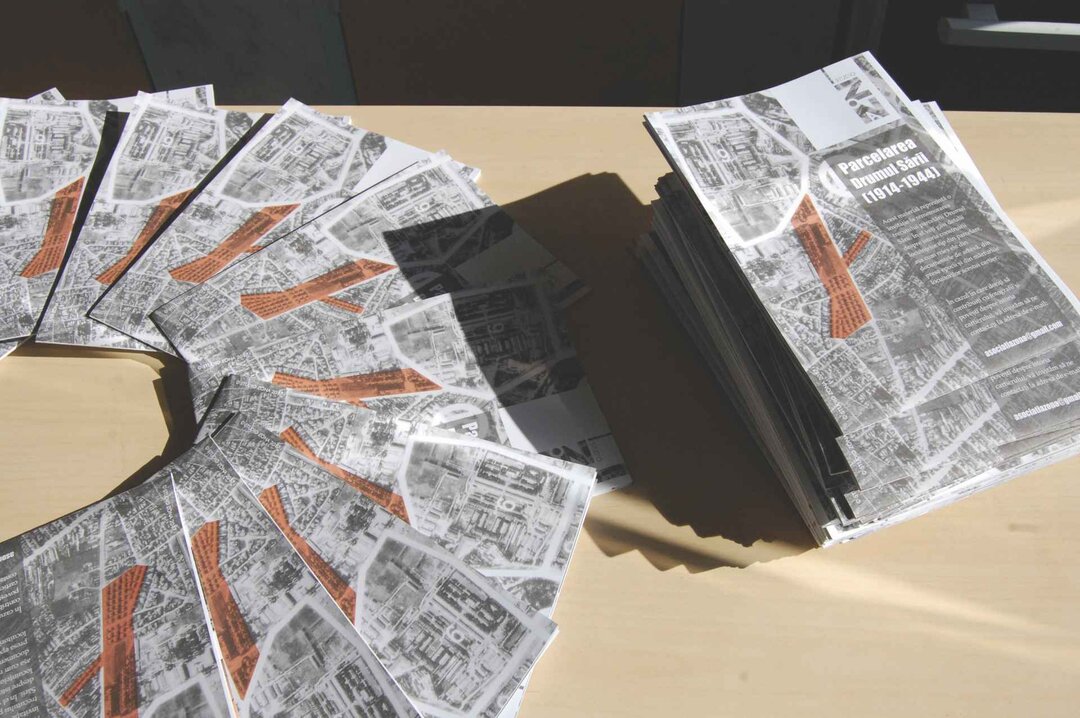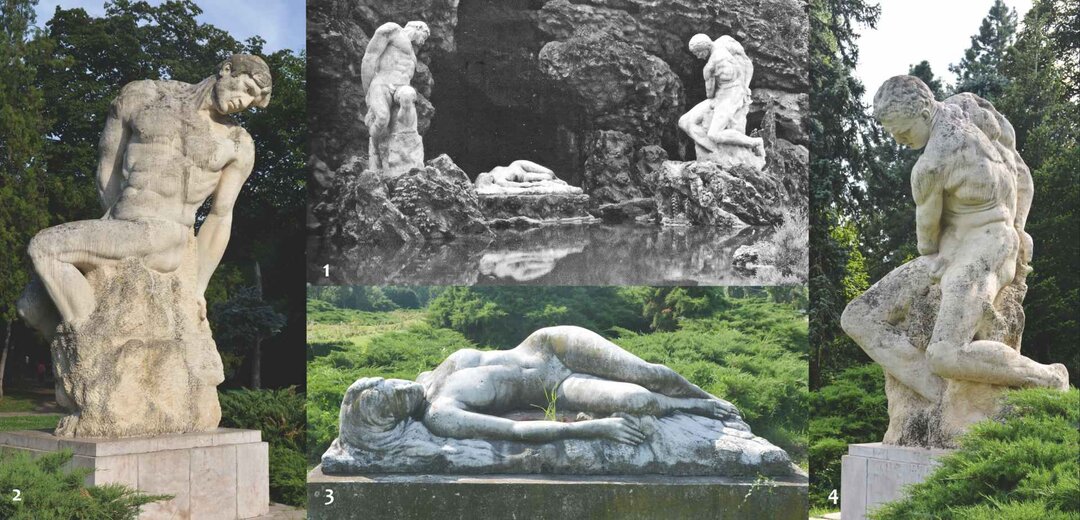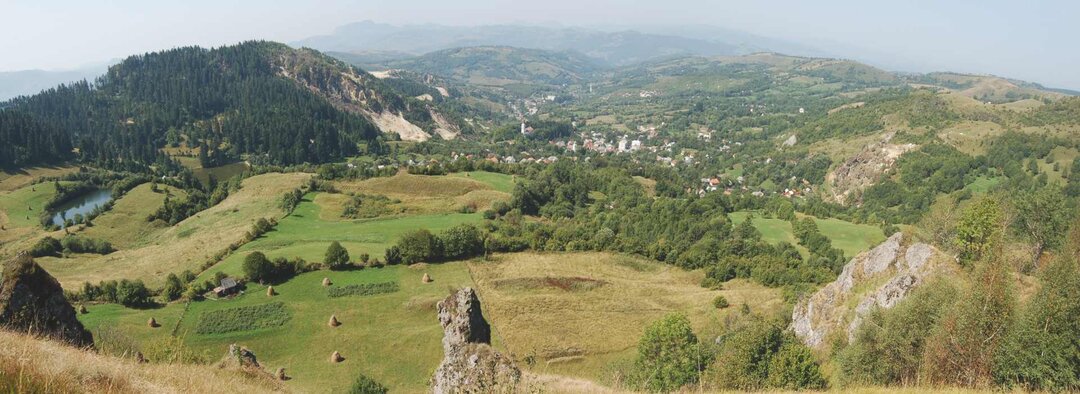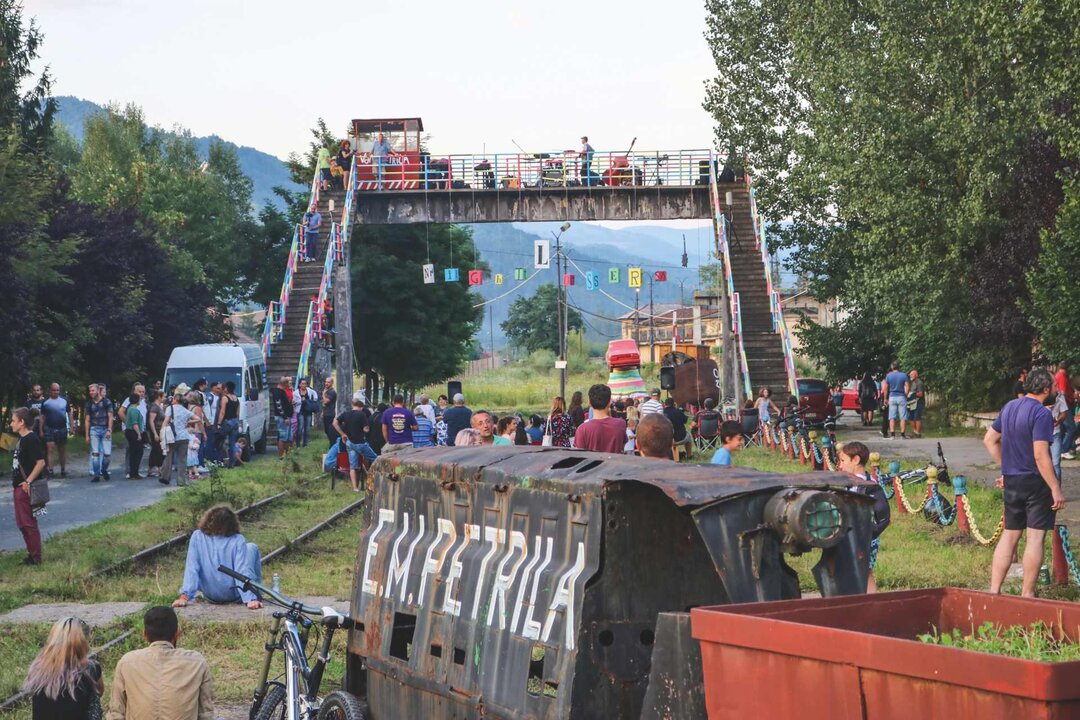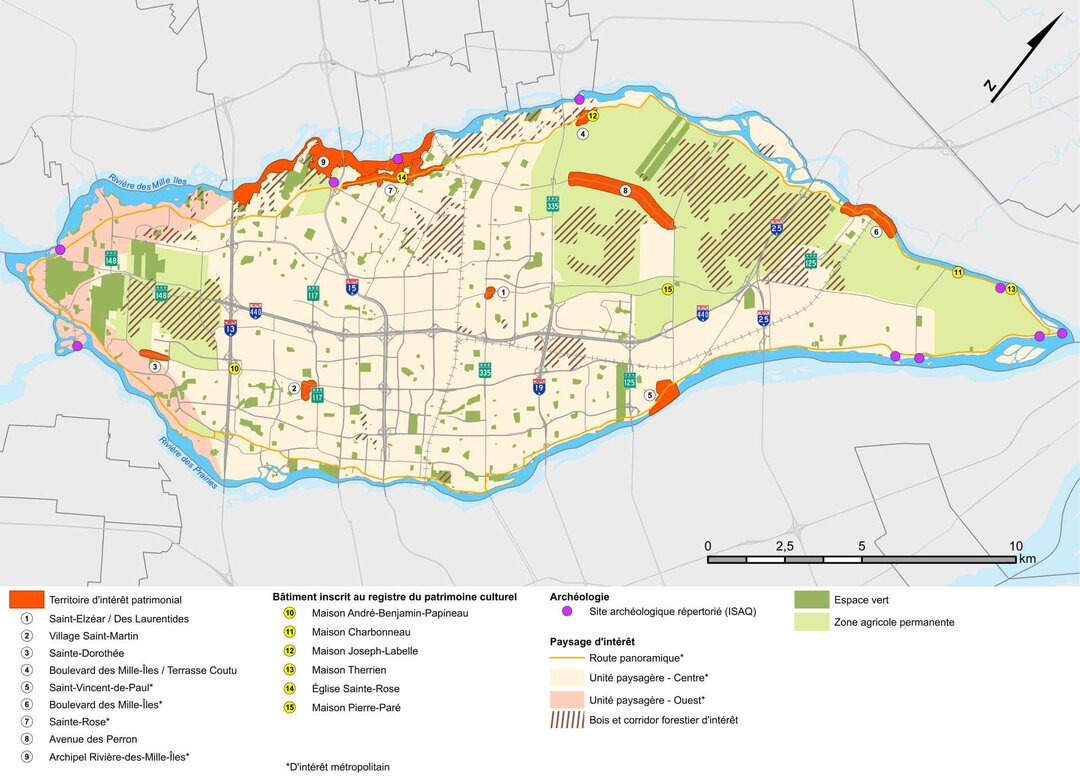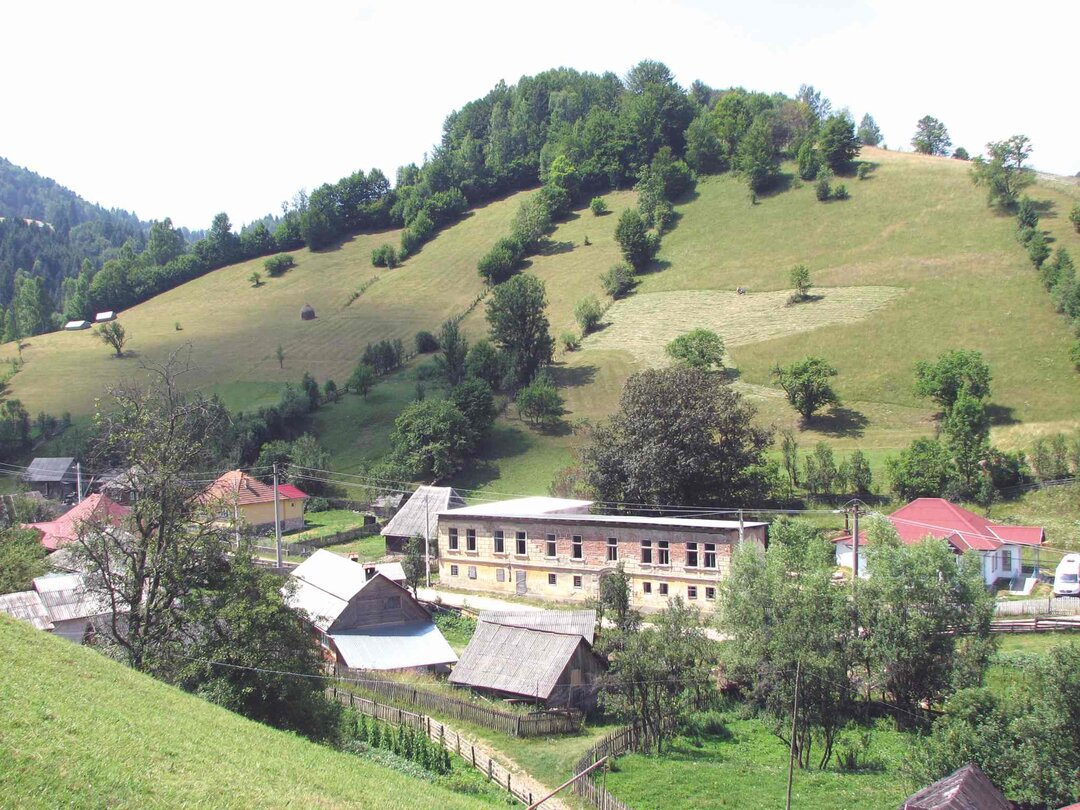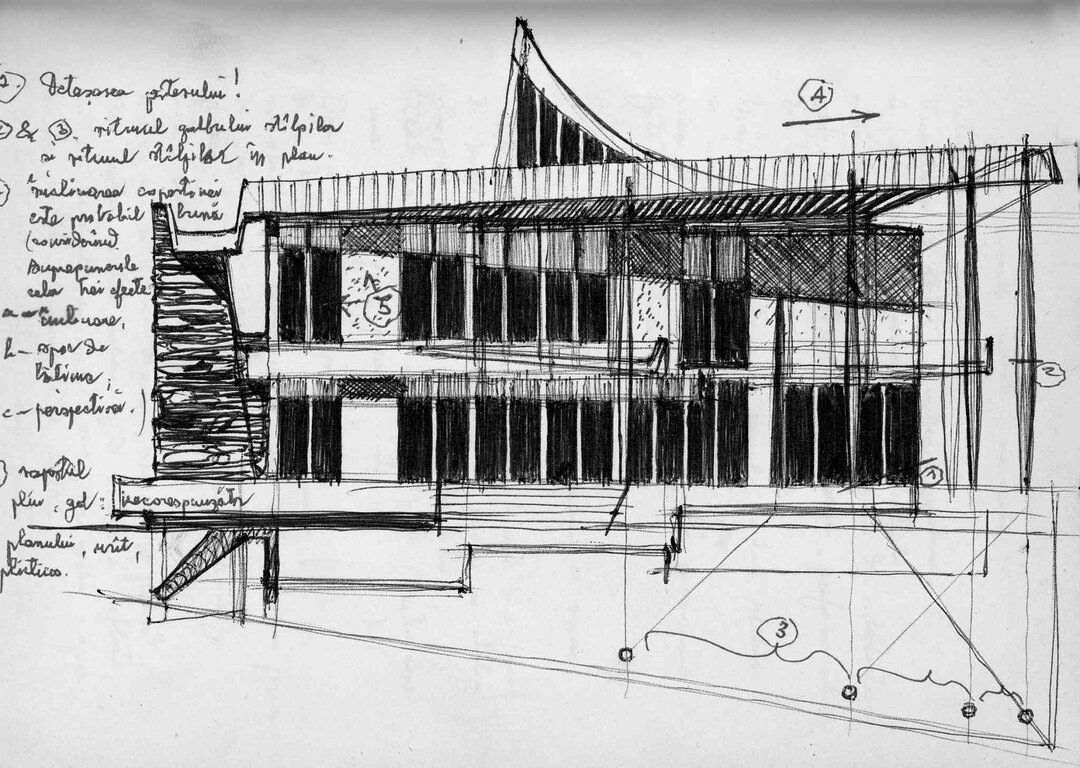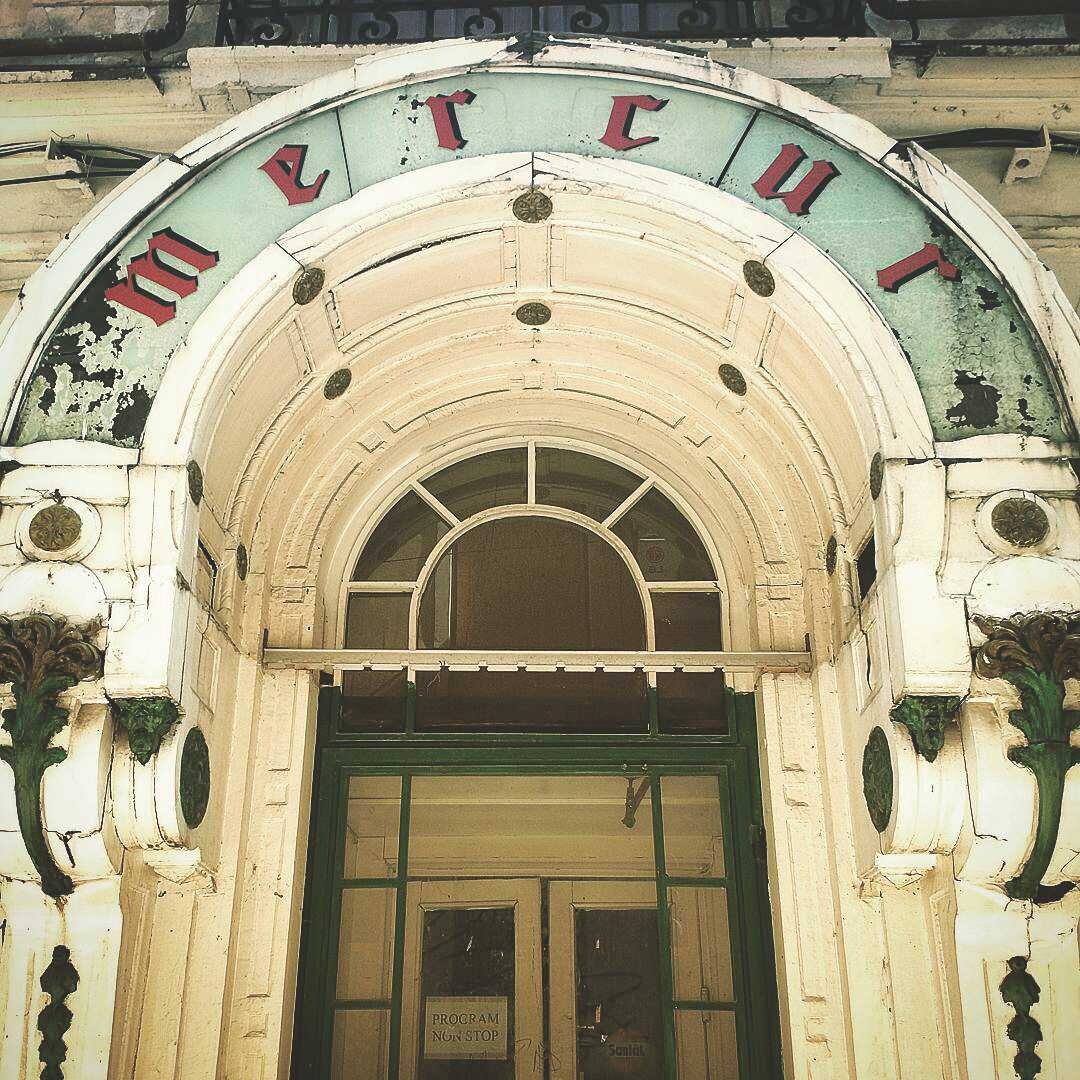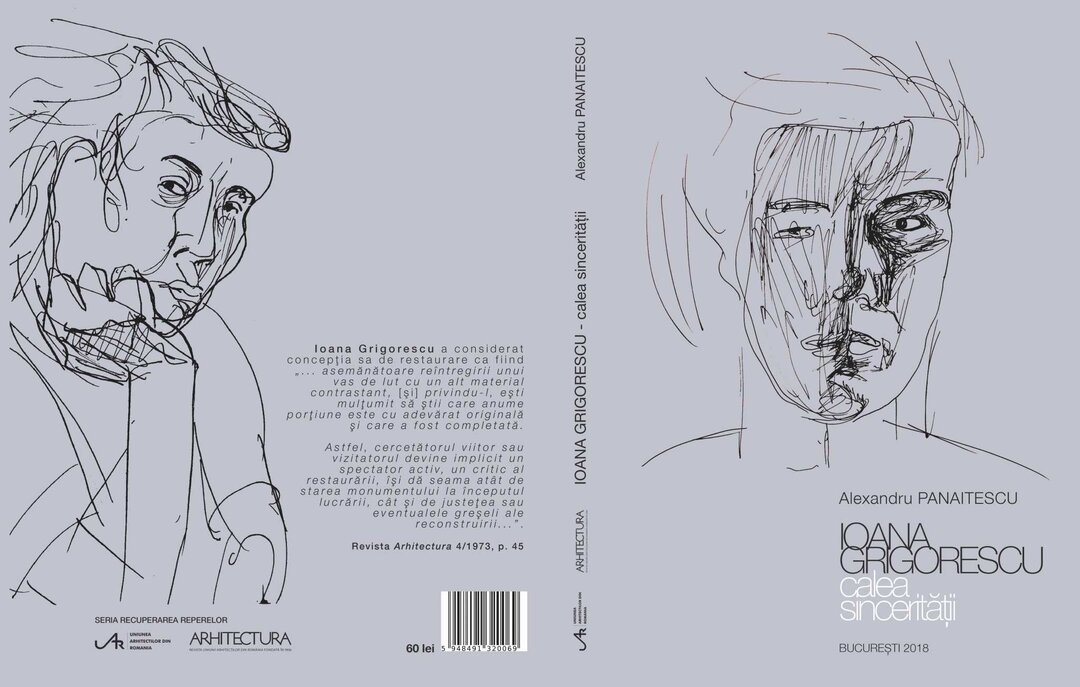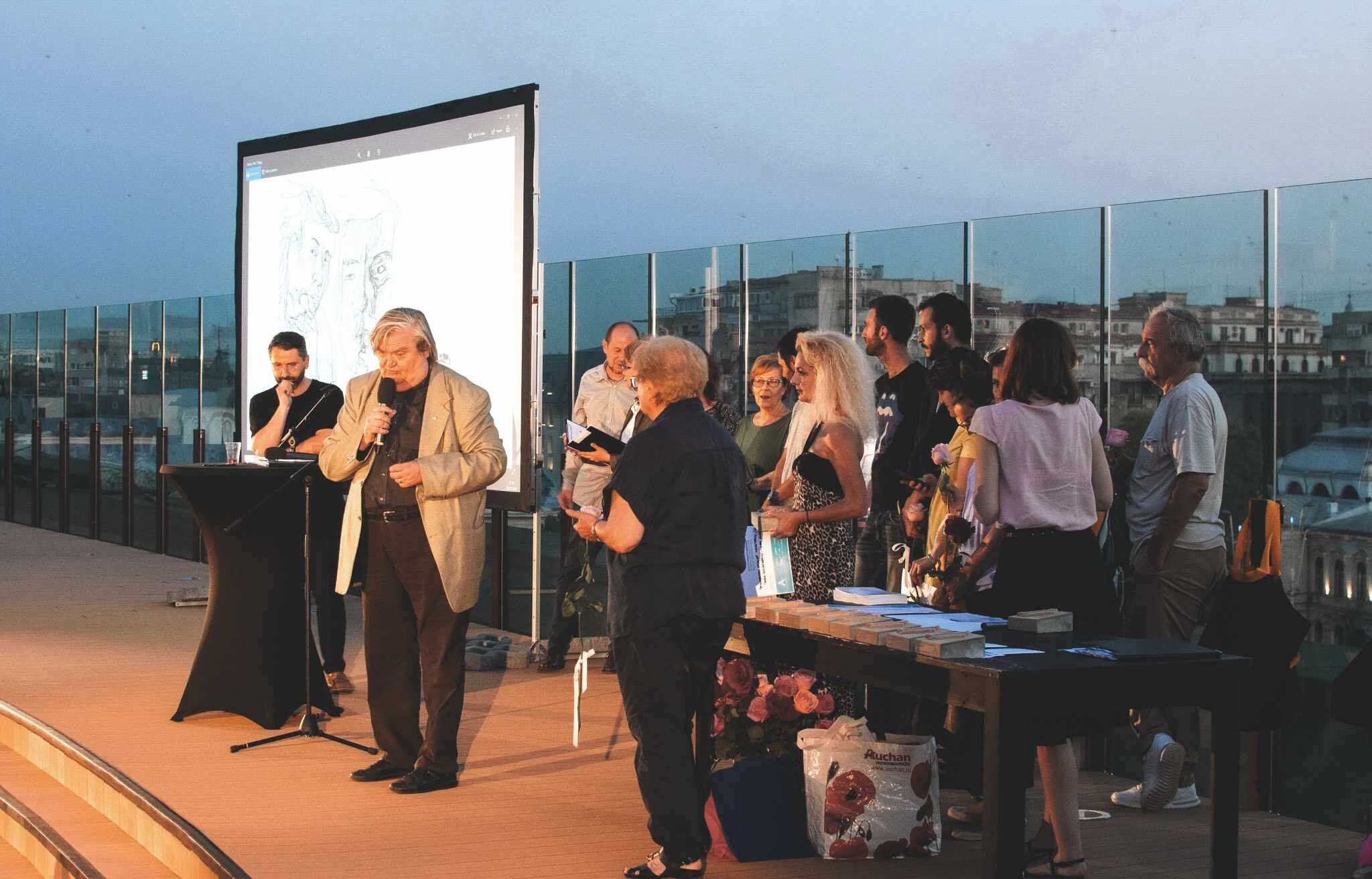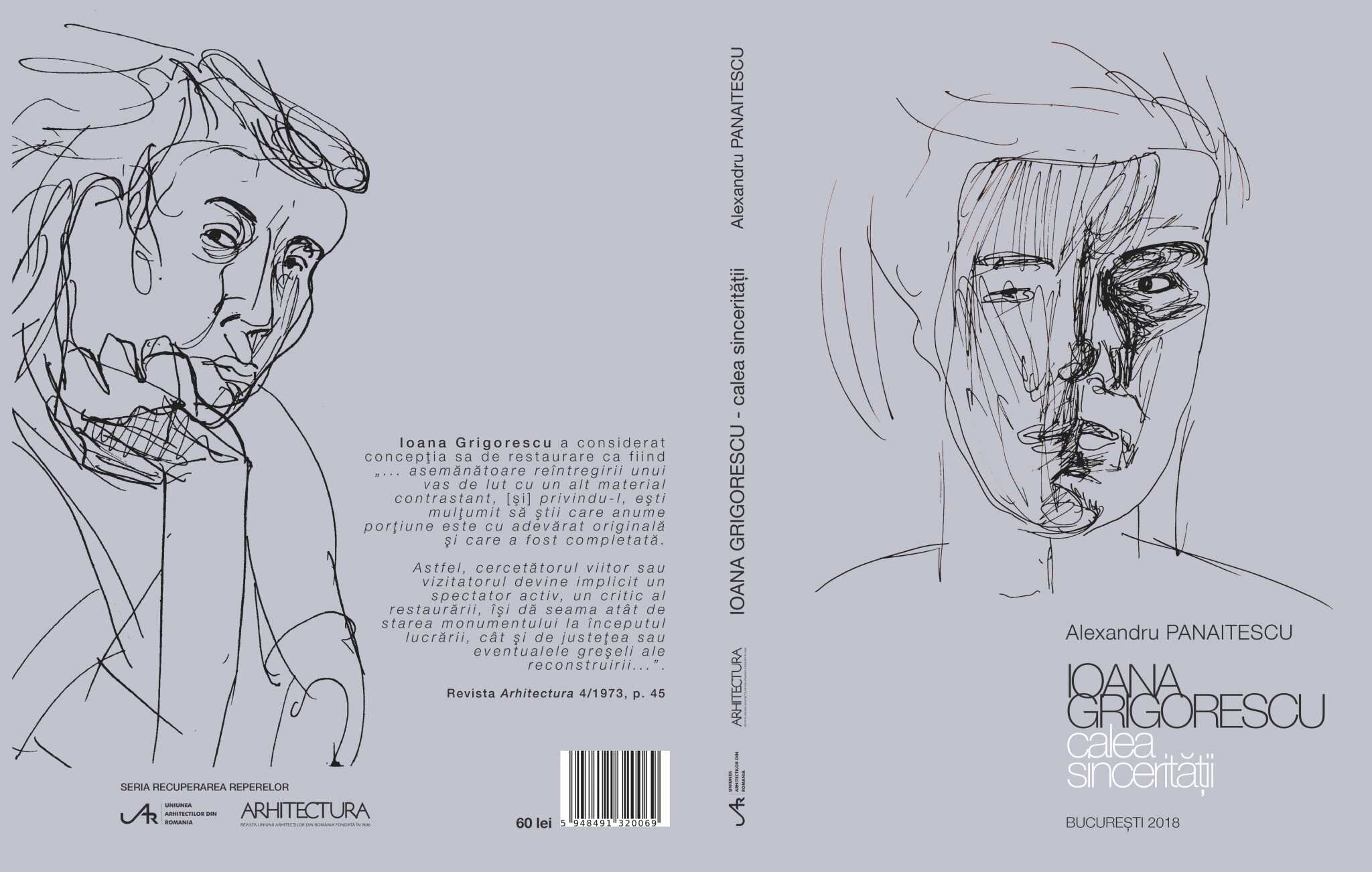
Ioana Grigorescu. The Path of Sincerity
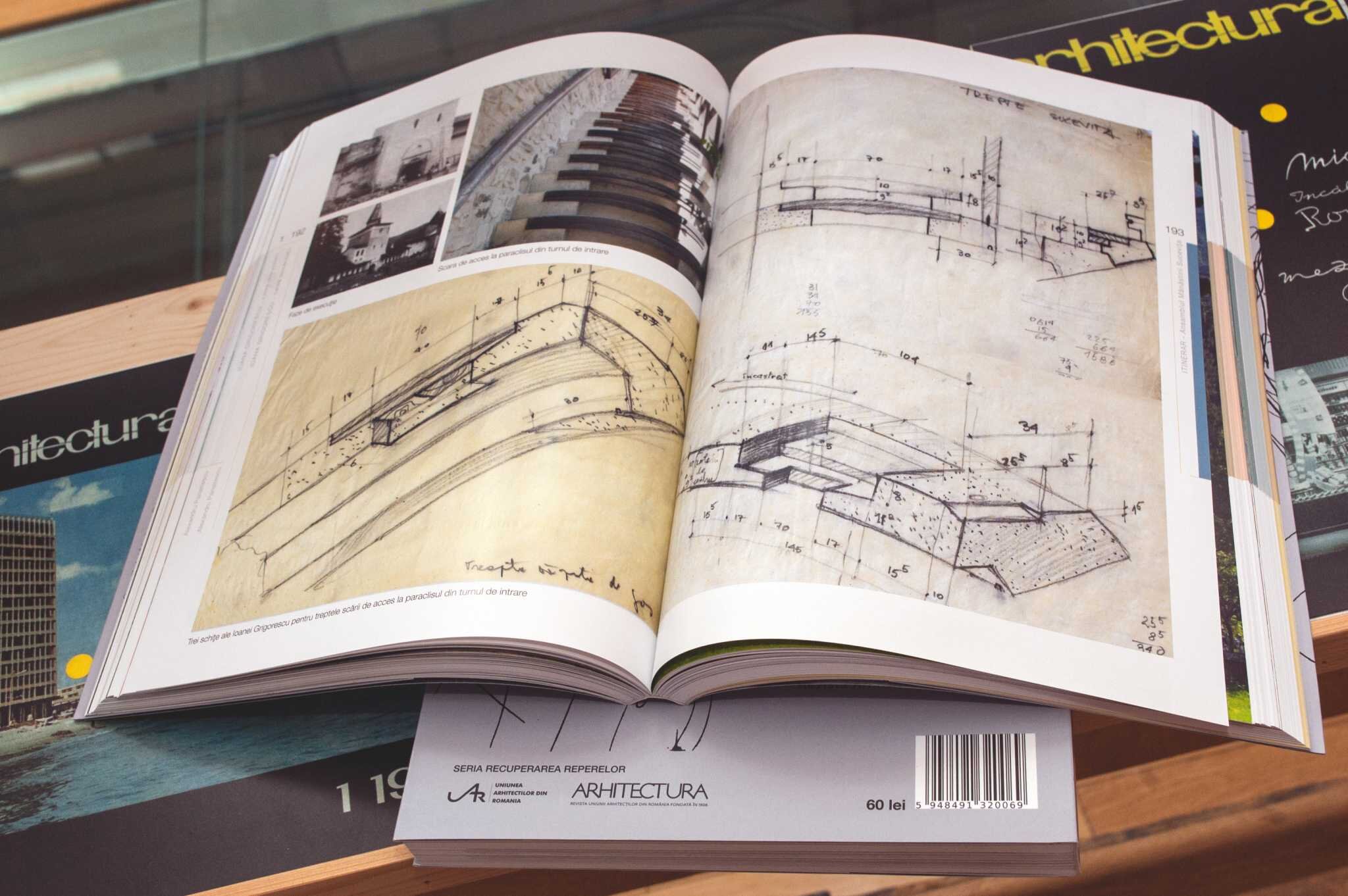
Ex libris
Ioana GrigorescuThe way of sincerity
Author: Alexandru Panaitescu
UAR, Arhitectura Magazine, Bucharest, 2018
Recovery of Landmarks Series
text: Anca FILIP
 This volume is part of the program Recuperarea Reperelor, initiated by the Union of Romanian Architects, which aims to "promote representative Romanian architects" (p. 1). We are indebted to the architect Alexandru Panaitescu for this extensive monographic album dedicated to Ioana Grigorescu, which aims to evoke, bring to the present and highlight the work and activity of this outstanding architect. The volume capitalizes on the rich documentary archive of Ioana Grigorescu in the UAR archive - the architect's personal archive - consisting of drawings, sketches, graphic works, photographs, memoirs, studies, etc.
This volume is part of the program Recuperarea Reperelor, initiated by the Union of Romanian Architects, which aims to "promote representative Romanian architects" (p. 1). We are indebted to the architect Alexandru Panaitescu for this extensive monographic album dedicated to Ioana Grigorescu, which aims to evoke, bring to the present and highlight the work and activity of this outstanding architect. The volume capitalizes on the rich documentary archive of Ioana Grigorescu in the UAR archive - the architect's personal archive - consisting of drawings, sketches, graphic works, photographs, memoirs, studies, etc.
Ioana Grigorescu (1915-2006) was born in Bucharest, where she attended the Central School for Girls as a boarder. Between 1934-1941 she attended the Faculty of Architecture, obtaining her architect diploma in 1947. After graduating from the Faculty of Architecture, she worked as an architect at the Radio Broadcasting Company, then from 1947-1950 at the Ministry of Arts and Information and from 1950-1951 at the Institute of Building Design. At the same time, between 1949-1952, he was also a university assistant at the Faculty of Architecture. Between 1952-1959 he took part in architectural competitions and worked at the Chamber of Commerce. From 1945 onwards he also made a name for himself as a visual artist, with solo exhibitions and group exhibitions. His talent is recognized by several awards. Towards the end of the 1950s, he worked at the State Committee for Construction, Architecture and Systematization - CSCAS, where, since its foundation in 1955, a restoration collective for historical monuments had been set up, which took over part of the exceptional body of specialists of the recently disbanded Commission of Historical Monuments - CMI. In 1959, the Directorate of Historical Monuments - DMI - was set up on this structure, in which Ioana Grigorescu worked from its foundation until 1972, when she retired for old age (57 years). Her work as an architect and restorer was intertwined with that of Nicolae Diaconu (1915-1997), her life companion - for a time - and closest collaborator. She died in 2006 and was buried in the cemetery of Dragomirna Monastery, a place dear to her soul.
She had a rich activity as an architect, in the field of restoration of historical monuments within the DMI, but also as a plastic artist. DMI was an emblematic institution for the restoration of historical monuments in Romania, representing a unique and unparalleled moment in the recent history of historical monuments. Taking over the tasks of the CMI, the DMI brought together for the first time all the activities of research, design, execution of restoration works and emergency interventions at historical monuments of primary historical-architectural importance, record and control of historical monuments throughout the country, specialized assistance and guidance for restoration works and emergency interventions designed and executed by other institutions, endorsement of all projects and works for the protection, conservation, consolidation, restoration and enhancement of historical monuments1.
In the short period of activity of this institution, 1959-1977, considered to be the golden age of Romanian restoration, hundreds of historical monuments of major importance were restored. A balance sheet of the first ten years of activity of the DMI (1959-1969) lists over 100 restorations - of which 75 were completed - and over 120 emergency interventions, a trend that continued in the following years until the institution was disbanded in 19772.
The period of her work at the DMI, 1959-1972, was the most fruitful in Ioana Grigorescu's life, as she was part of the institution's team of professionals - great personalities of Romanian restoration - who were also able to pass on to new generations the science of restoration and that experience that cannot be extracted from books. Among the restoration works that Ioana Grigorescu led as project manager, we can mention: Sucevița, Dragomirna and Secu monasteries complex, the church and Vasile Lupu Tower at Humor Monastery, the church and Treasure Tower at Putna, towers of the Slatina Monastery enclosure, the church and the priory of Voroneț Monastery, Dosoftei House in Iași, all first-class monuments of Romanian architecture, three of which are today inscribed on the UNESCO World Heritage List (the monastery churches of Sucevița, Humor and Voroneț). The architect has left her personal mark on all the restored monuments, her work as a restorer constantly intertwining with her work as a plastic artist. Her powerful creativity was strongly expressed in this complex and sensitive but also restrictive field of restoration. She was a member of the Union of Architects and of the Union of Fine Artists, graphic section. Here is a brief and eloquent characterization of her qualities as a visual artist: "The artist uses a variety of techniques and media for works in pencil, pen, gouache, pastel, some of them large. An important part of her plastic work consists of architectural sketches and studies. He modeled, composed interior objects and settings, interpreted structural elements and spatial enclosures (pillars, gates, steps) as sculptural objects"3.
The monograph dedicated to Ioana Grigorescu is structured in several chapters. In the Argument the author describes the Ioana Grigorescu collection in the UAR archive, which was the main documentary source for this volume. The author expresses his wish to produce a second, specialized volume, which would also present the documents - projects, studies, memoirs - due to Ioana Grigorescu, in the archives of the National Heritage Institute (p. 9-10), a major documentary source, which the author ignores in the realization of this first volume.
The chapter The man and his work, illustrated with valuable archive documents - photographs and drawings - introduces us to the life and work of Ioana Grigorescu. The extensive documentation is reflected in the notes at the end of the chapter, including more than 30 biographical notes on personalities in the field of the protection and restoration of historic monuments or in the general field of architecture. The author also brings out the darker side of the great architect's personality, at times harsh, rigid and confrontational. He sometimes takes an excessively subjective stance, due to his great admiration for the architect, which he confesses, and seems contaminated by some of her attitudes, when he criticizes the work of the DMI and the work of some of Ioana Grigorescu's prestigious colleagues. But, as Ioana Grigorescu so beautifully stated in 2002, shortly before the end of her life: "Confrontations of opinions remain in the shadow of architectural achievements, which, in turn, stand the test of time" (p. 43).
 The Professional Creed presents Ioana Grigorescu's scientific activity: scientific communications, studies, in which the architect expresses her attitude towards the act of restoration. The document Professional landmarks 1943-1972, written by Ioana Grigorescu after her retirement, as an appendix to an autobiography in 1972, is extremely valuable, in which the architect reviews the landmarks of her work as a restorer and lists the main monuments restored, with emphasis on the description of "old elements researched, completed, emphasized (...) constituting contributions to the History of Romanian architecture, integrating and enriching the knowledge of these monuments with elements unknown before these restorations" (p. 78-80).
The Professional Creed presents Ioana Grigorescu's scientific activity: scientific communications, studies, in which the architect expresses her attitude towards the act of restoration. The document Professional landmarks 1943-1972, written by Ioana Grigorescu after her retirement, as an appendix to an autobiography in 1972, is extremely valuable, in which the architect reviews the landmarks of her work as a restorer and lists the main monuments restored, with emphasis on the description of "old elements researched, completed, emphasized (...) constituting contributions to the History of Romanian architecture, integrating and enriching the knowledge of these monuments with elements unknown before these restorations" (p. 78-80).
The chapter Itinerary of the architect Ioana Grigorescu, the most important chapter in the monographic album, takes us on a journey in the footsteps of Ioana Grigorescu's restorations. All the monuments restored by the architect are amply documented by the author: historical data, detailed descriptions, old and current photographs, restoration sketches and drawings from the Ioana Grigorescu collection in the INP archive, descriptions of the restoration work and of her interventions in historic buildings. The journey takes us to the monastery of Dealu, whose chapels were designed by the architects Ioana Grigorescu and Nicolae Diaconu, the monasteries of Dragomirna, Sucevița, Humor, Voroneț, Putna, Slatina, Secu, Sihăstria Secului and the Dosoftei House in Iași.
Chapter The Joy of Drawing, with subchapters: Under the Sign of Picasso, The Lesson of the MASTERS, The Beauty of the Body, Self-portraits, Niculae, Figures, Landscapes, Decorative Experiences of the 1950s, The Expression of Sadness of the 1970s and 1980s, is a veritable art album, published in exceptional graphic conditions, illustrating the creative force and talent of a great artist. Part of these drawings - a selection of self-portraits and portraits - was exhibited at the UAR's Center for Architectural Culture from March to April 2017. The exhibition, representing the general public's first contact with the undiscovered treasures of the Ioana Grigorescu documentary collection in the UAR archive, was a great success.
A very important chapter is titled Thoughts on Ioana Grigorescu, in which architects working in the field of protection and restoration of historical monuments, some of them her successors in the restoration of great medieval ensembles in Moldova, express themselves, thus facing the delicate and complex problem of restoring the architect's restorations. Prof. dr. dr. arh. Virgil Polizu, who worked as a beginner architect, then as an architect in the collective led by Ioana Grigorescu at the DMI, calls her "a restorer blessed with the grace and gift of creation" (p. 366). The architect evokes the veritable school of restoration that the DMI represented for him between 1968 and 1977, the period during which he worked there. He evokes 'the period of European performance of the Directorate' (p. 367) and the entire group of restorers of that time, led by Ștefan Balș, who 'imposed a doctrine, an approach and a restoration technique that are still valid today' (p. 367). He expresses his gratitude to Ioana Grigorescu, to whom he was, over the years, apprentice, collaborator and follower. He calls her "one of the leaders of professional opinion (not seldom contested) of the excellent group of specialists assembled within the Directorate" (p. 367), and says of the Dragomirna monastery complex that "it is a lesson in restoration and enhancement, with solutions of volume and detail that are delightful in their quality and modernism" (p. 368).
The architect Constantin Gorcea, who followed Ioana Grigorescu in the restoration of the Dragomirna Monastery, entitled his lines dedicated to the architect: "Ioana Grigorescu or about continuous restoration" and stated that "restoration, for Ioana Grigorescu, was a REinstatement of value, an effort of REconfirmation! (p. 369).
He expresses his attitude towards the restoration interventions due to the architect of Dragomirna: "As a general principle of intervention it should be kept in mind that the elements added to the original medieval structures and components during the restoration in the 1960s, due to their perfect integration and their intrinsic value, have themselves become part of the monument and should be treated as such" (p. 370).
The architect Constanța Carp, who worked as a junior architect in Ioana Grigorescu's team at the DMI and who succeeds Ioana Grigorescu in the restoration of the Sucevița Monastery complex, calls her "the lady of Romanian restoration" (p. 372), warmly evoking the personality and work of her predecessor and expressing her honor to be part of the "restoration of the restoration" of the Sucevița Monastery. "I do not cease to admire the accuracy of the details, the ingenuity of adapting solutions for the proper functioning of the monastery complex, and the discernment without disharmony in the integration of new materials (such as the apparent concrete in the restored vaults of the porch of the manor house, which retains the warmth of the wood fibers from the shuttering)" (p. 372).
Dr. arh. Victor Dan Kisilewicz evokes how he discovered Ioana Grigorescu's restorations: first as a student, in the classes of Professor Gheorghe Curinschi, then through the stories of the architect Nicolae Diaconu, and then to research the restored monuments as the person in charge of the DMASI for the Moldavian area. Later the actual meeting with Ioana Grigorescu took place. Inspired by the strong creative personality of the architect expressed in the field of restoration of historical monuments, the architect dedicated extensive studies to her and presented her work in wide-ranging exhibition projects, unfortunately not all materialized, based on the illustration of the concepts of "critical act and creative act of conservation" (p. 375).
In conclusion, it can be said that the album succeeds in evoking, bringing up to date and highlighting the work of a great architect and artist, Ioana Grigorescu, and is a notable editorial publication in the specialized literature.
The volume, which saw the light of print in June this year, received the Bucharest Branch President's Award at the Bucharest Architecture Annual 2018, in the "Architecture Book" section. The ceremony took place on July 5, 2018.
The official launch took place on August 10, 2018, during the cultural event Urban Culture Days at the "Uzina de Apă" - Suceava, 7th edition, in the presence of a large audience, including representatives of the monastic orders of the monasteries of Dragomirna and Voroneț, restored by the architect Ioana Grigorescu.
NOTES
1. Prof. arh. Richard Bordenache, eng. Victor Munteanu, Criterii științifice în activitatea de restaurare a monumentele istorice, BMI nr. 1/1970, p. 6.
2. Main restoration works of historical monuments in the Socialist Republic of Romania (1959-1969), BMI nr. 1/1970, p. 73-78.
3. Sidonia Teodorescu et alli, Dicționar al arhitecturii românești moderne (sec. XIX, XX, XXI) Arhitecți (literele D-H), UAR, București, 2014, p. 136

